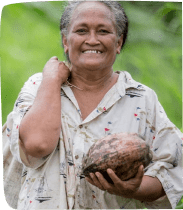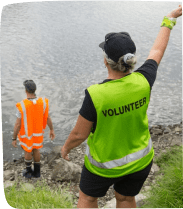The 136 forced displacement orders Israel imposed on 25 per cent of Lebanon during its 62 – day war were woefully inadequate, unnecessarily dangerous and likely illegal, aid agencies said today.
These orders, which Israel called evacuations, either targeted defined locations, were mass orders that encompassed entire villages, neighbourhoods and towns, or vague directives on nonspecific areas that collectively forced 1.4 million people to flee their homes to overcrowded shelters, and some onto the streets, as nearly every governate in Lebanon came under attack.
In a joint report released today, Forced Displacement Orders: Debunking the Myth of Humane Attacks, ActionAid and Oxfam reveal that so-called evacuation orders between September 23rd and October 31s may amount to a campaign of forcible transfer— a grave breach of International Humanitarian Law (IHL). The report highlights how these displacements were neither legitimate nor safe, leaving families without shelter or protection and raising serious concerns about potential war crimes.
The report found the orders were impossible to comply with and triggered waves of mass displacement that failed to meet all standards of IHL which demands effective advance warnings that are clear, targeted, and give sufficient time to allow people to leave safely, as well as a timeline for them to return home.
Out of the 3334 air strikes Israel conducted from Sept 23 to Oct 31st, only 117 (3.5 per cent) area specific forced displacements orders were issued. On average, the orders were sent with only 15-45 minutes warning before a strike, with the majority issued in the middle of the night between 10pm and 4am.
“The chaos, destruction, and disruption caused by these displacements will continue to affect the most vulnerable communities long after the ceasefire,” said Oxfam Lebanon Country Director Bachir Ayoub.
“Entire communities—many already among the most vulnerable, including Syrian and Palestinian refugees and migrant workers—were uprooted from their homes and thrust into life-threatening conditions. Thousands, already struggling, saw their vulnerabilities deepen, pushing them to the brink. Many were forced to seek refuge into places where privacy, sanitation, and safety were severely inadequate, putting women and girls at heightened risk of gender-based violence. Essential services like clean water and healthcare have been damaged, while the disruption of schooling has deprived tens of thousands of children of their basic right to education.”
Sudipta Kumar, ActionAid’s Regional Director for the Arab Region, said: “The impact of these attacks by Israeli forces will be felt for many years to come. After the ceasefire, thousands of families returned to their towns and villages to find their homes reduced to wreckage. Many have been left with nothing and cannot afford to rebuild.
“The only way to protect people in Lebanon from further upheaval is to agree an immediate and permanent ceasefire in Lebanon and in Gaza. Until then, families in Lebanon will continue to live in fear that bombs could start dropping on their homes again at any moment.”
Forced displacement is prohibited under IHL, and evacuation is only lawful when civilian safety and well-being are guaranteed, including access to shelter, hygiene, health services, food, and family unity. The agencies found that Israel’s displacement orders in Lebanon failed to meet these conditions, offering no adequate provisions for civilian welfare. As a result, these actions constitute a grave breach of IHL and show blatant disregard for civilian safety.
To ensure that the tens of thousands of civilians still unable to return home can rebuild their lives—and to preserve Lebanon’s fragile peace—the agencies call for all efforts to ensure the current ceasefire agreement in Lebanon holds, an immediate and permanent ceasefire in Gaza is reached with all violations condemned and urgently addressed. As well the as immediate and safe return of displaced people in South Lebanon.
The international community must halt the transfer of weapons and military equipment where there is a risk they will be used to commit further IHL violations and hold all parties accountable for any IHL violations to ensure civilians, regardless of their location or circumstances, are protected.
Notes to editors
- Download Oxfam’s report Forced Displacement Orders: Debunking the Myth of Humane Attacks





